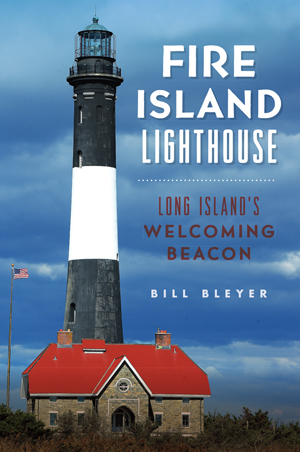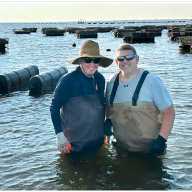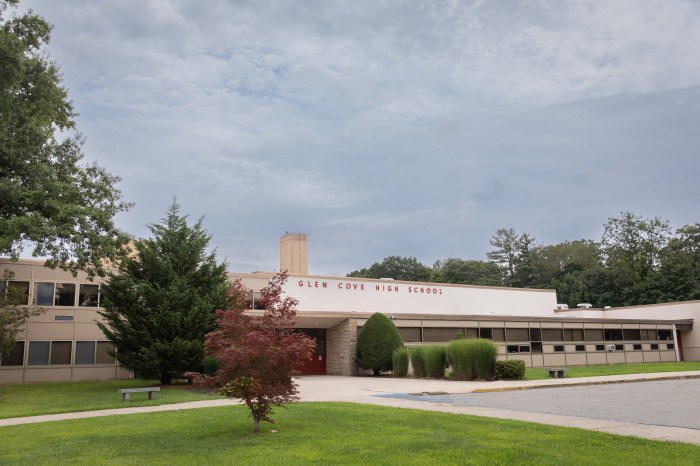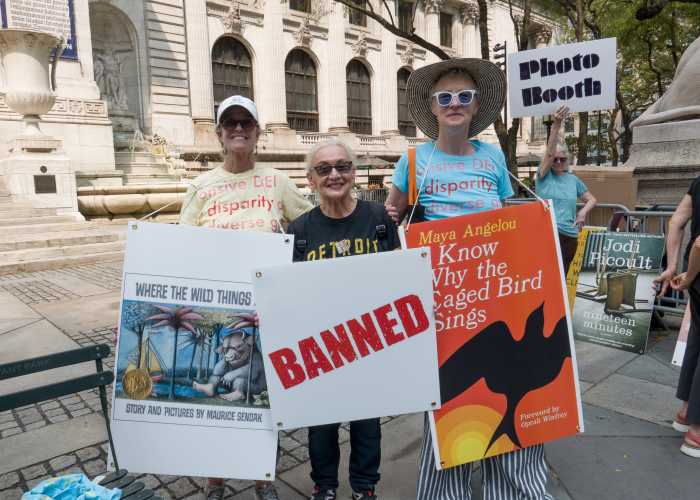Review by Rita Plush
 WAY BACK WHEN, A FIRE atop a platform served as a light to warn mariners of ports and possible shoreline dangers. But the times they were changing, and the turn of the 18th Century meant more travelers and a greater need for a more modern way to signal navigators of the watery dangers that might lie ahead. There was a definite need to alert vessels approaching Fire Island’s sandbars. Enter the modern-day light- house and its steadfast beam of light leading a safer way to the shores of the barrier island.Bill Bleyer, prize-winning staff writer for Newsday and life-long boater is clearly smitten with the lighthouse, and for years has written about it. Here, he lays out for the reader both its past and present, covering everything from the construction of the first lighthouse tower in 1826 to the current renovation of the second tower. A back of the book timeline lets readers track the changes in the lighthouse, while his interesting stories of the keepers and little known facts make for an engaging narrative. I wasn’t aware that Margaret Fuller, journalist/feminist/friend of Ralph Waldo Emerson and non-swimmer, drowned on the “Elizabeth” in 1850, along with her husband, infant son and four sailors. This spurred the campaign for a new light house tower.Using his reporting chops, Bleyer investigates the Fresnel lens (pronounced frenel, with a silent s.) Named for Augustin-Jean Fresnel, the French physicist who pioneered the invention in the early 19th Century, the lens was a radical change in the structure and strength of the lamp-lit, reflector type beams then in use. A scalloped glass beauty made of over- lapping prisms, reminiscent of the scales of a fish to this reviewer’s eye, it allowed for a longer, stronger beam – the same type used today in car headlamps. Though it was more expensive at the outset, in the end it turned out to be both cost and lifesaving.
WAY BACK WHEN, A FIRE atop a platform served as a light to warn mariners of ports and possible shoreline dangers. But the times they were changing, and the turn of the 18th Century meant more travelers and a greater need for a more modern way to signal navigators of the watery dangers that might lie ahead. There was a definite need to alert vessels approaching Fire Island’s sandbars. Enter the modern-day light- house and its steadfast beam of light leading a safer way to the shores of the barrier island.Bill Bleyer, prize-winning staff writer for Newsday and life-long boater is clearly smitten with the lighthouse, and for years has written about it. Here, he lays out for the reader both its past and present, covering everything from the construction of the first lighthouse tower in 1826 to the current renovation of the second tower. A back of the book timeline lets readers track the changes in the lighthouse, while his interesting stories of the keepers and little known facts make for an engaging narrative. I wasn’t aware that Margaret Fuller, journalist/feminist/friend of Ralph Waldo Emerson and non-swimmer, drowned on the “Elizabeth” in 1850, along with her husband, infant son and four sailors. This spurred the campaign for a new light house tower.Using his reporting chops, Bleyer investigates the Fresnel lens (pronounced frenel, with a silent s.) Named for Augustin-Jean Fresnel, the French physicist who pioneered the invention in the early 19th Century, the lens was a radical change in the structure and strength of the lamp-lit, reflector type beams then in use. A scalloped glass beauty made of over- lapping prisms, reminiscent of the scales of a fish to this reviewer’s eye, it allowed for a longer, stronger beam – the same type used today in car headlamps. Though it was more expensive at the outset, in the end it turned out to be both cost and lifesaving.
 WAY BACK WHEN, A FIRE atop a platform served as a light to warn mariners of ports and possible shoreline dangers. But the times they were changing, and the turn of the 18th Century meant more travelers and a greater need for a more modern way to signal navigators of the watery dangers that might lie ahead. There was a definite need to alert vessels approaching Fire Island’s sandbars. Enter the modern-day light- house and its steadfast beam of light leading a safer way to the shores of the barrier island.Bill Bleyer, prize-winning staff writer for Newsday and life-long boater is clearly smitten with the lighthouse, and for years has written about it. Here, he lays out for the reader both its past and present, covering everything from the construction of the first lighthouse tower in 1826 to the current renovation of the second tower. A back of the book timeline lets readers track the changes in the lighthouse, while his interesting stories of the keepers and little known facts make for an engaging narrative. I wasn’t aware that Margaret Fuller, journalist/feminist/friend of Ralph Waldo Emerson and non-swimmer, drowned on the “Elizabeth” in 1850, along with her husband, infant son and four sailors. This spurred the campaign for a new light house tower.Using his reporting chops, Bleyer investigates the Fresnel lens (pronounced frenel, with a silent s.) Named for Augustin-Jean Fresnel, the French physicist who pioneered the invention in the early 19th Century, the lens was a radical change in the structure and strength of the lamp-lit, reflector type beams then in use. A scalloped glass beauty made of over- lapping prisms, reminiscent of the scales of a fish to this reviewer’s eye, it allowed for a longer, stronger beam – the same type used today in car headlamps. Though it was more expensive at the outset, in the end it turned out to be both cost and lifesaving.
WAY BACK WHEN, A FIRE atop a platform served as a light to warn mariners of ports and possible shoreline dangers. But the times they were changing, and the turn of the 18th Century meant more travelers and a greater need for a more modern way to signal navigators of the watery dangers that might lie ahead. There was a definite need to alert vessels approaching Fire Island’s sandbars. Enter the modern-day light- house and its steadfast beam of light leading a safer way to the shores of the barrier island.Bill Bleyer, prize-winning staff writer for Newsday and life-long boater is clearly smitten with the lighthouse, and for years has written about it. Here, he lays out for the reader both its past and present, covering everything from the construction of the first lighthouse tower in 1826 to the current renovation of the second tower. A back of the book timeline lets readers track the changes in the lighthouse, while his interesting stories of the keepers and little known facts make for an engaging narrative. I wasn’t aware that Margaret Fuller, journalist/feminist/friend of Ralph Waldo Emerson and non-swimmer, drowned on the “Elizabeth” in 1850, along with her husband, infant son and four sailors. This spurred the campaign for a new light house tower.Using his reporting chops, Bleyer investigates the Fresnel lens (pronounced frenel, with a silent s.) Named for Augustin-Jean Fresnel, the French physicist who pioneered the invention in the early 19th Century, the lens was a radical change in the structure and strength of the lamp-lit, reflector type beams then in use. A scalloped glass beauty made of over- lapping prisms, reminiscent of the scales of a fish to this reviewer’s eye, it allowed for a longer, stronger beam – the same type used today in car headlamps. Though it was more expensive at the outset, in the end it turned out to be both cost and lifesaving.Striking photos by Audrey C. Tiernan enhance the text. Better yet, see the original Fresnel lens in the lens building that opened to the public in 2011. (Check the Fire Island Lighthouse website for hours.) Life for the early lighthouse keepers was anything but light, and for Hans Christian Andersen (not the Danish author) it was lonely. So lonely, that in 1910 the assistant keeper put out a newspaper ad for a wife, describing himself as “a stoutly built man of 38” with a “jolly face and a mustache of a sandy color.” Out of the 250 plus responders, aged 15 to 60, Andersen found a woman to his liking and had two children with her. Bleyer’s research uncovered that he may have been a wife-beater and a drunk.Many solid citizens however devoted time and never-ending labor to protect lives and maintain the beacon. From 1917 to 1919 George J. Thomas filled the kerosene lantern, trimmed the wick, cleaned the glass, polished the brass, and kept the floors gleaming with shellac. Working alongside him Mrs. Thomas did the laundry – washed by hand and hung to dry – fixed meals – often with “ducks and geese that crashed into the tower – to supplement the fish…so readily available that they became boring” – and emptied the outhouse barrels in the spring and fall (indoor plumbing was unknown at the lighthouse till 1931).Though lighthouse living was a challenge for the Thomas’s, for their children it was an adventure. The spirited Lucy, a Thomas daughter, wore a red wide- brimmed straw hat so her parents could keep an eye on her from the tower as she wandered around the island. Recalling how much she enjoyed walking along the beach with her father, Lucy remembered an explosion she had heard that turned out to be from “a Navy cruiser that had run into a mine laid by a German U-boat in World War I.”
Through the years faithful keepers devoted themselves to the lighthouse, and through the years the harsh sea environment did its damage to the tower. In 1978, deteriorating beyond repair, it was scheduled for demolition by the Coast Guard. That changed when the Fire Island Lighthouse Preservation Society stepped in and saved the day – and the lighthouse – from the wreckers’ ball. Not “just to save it,” Tom Roberts, then president of the society said. “It is directed to saving the lighthouse to put it to work… restored to its historical and rightful place in providing safe navigation of our maritime craft.”Due to the tireless efforts and funding of the Society, renovation and repair of the landmark structure have been ongoing, most recently with a restoration project to undo the damage inflicted by Superstorm Sandy. Bleyer’s feelings for the lighthouse are palpable as he envisions its “graceful curves erupting majestically from the sandy landscape of the barrier island like a rocket poised for launch.”Available for purchase at the Fire Island Light- house gift shop, or The History Press website www.arcadiapublishing.com. For possible inclusion in the Book Review, Fire Island authors are encouraged to contact editor@fireisland-news.com with information about their recently published work.





























